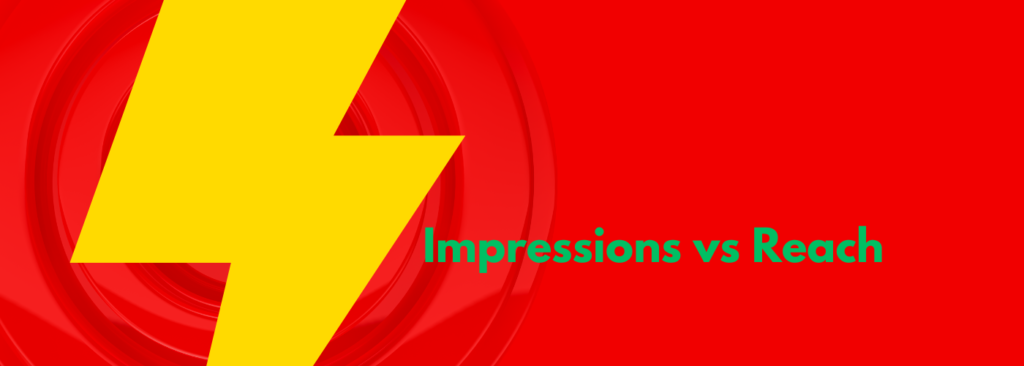Understanding impressions and reach is essential for tracking the success of your digital advertising campaigns.
Ever wondered how many times your social media post gets displayed compared to the number of people who actually see it?
This piece unpacks the difference between two key metrics: impressions and reach.
Table of Contents
ToggleGrasping Impressions and Reach
Impressions only measure the total number of times your ad or a piece of content enters a user’s line of sight, regardless of whether they pay attention to it or not.
Reach refers to the number of unique users who see your ad or content at least once.
It focuses on unique viewers, not the number of times your content is displayed.
How Impressions and Reach Measure Your Online Presence
Imagine you’re running a lemonade stand on a busy sidewalk.
Every time someone walks by, that’s an impression.
It counts how many times your stand is potentially seen, regardless of whether someone stops to buy lemonade.
Reach, on the other hand, is like the number of unique people who stop by your stand.
Even if some people come back for more glasses of lemonade throughout the day, they’d only be counted once in your reach total.
So, impressions capture the total visibility of your ad, while reach focuses on the number of individual viewers it attracts.
The equation between reach and impressions might be equal initially, but impressions tend to grow faster over time due to repeat exposure and broader distribution.
Are impressions better than reach?
Neither impressions nor reach are inherently “better” – they both provide valuable insights but for different purposes.
Impressions are the crucial first step for any content or ad.
They act like building blocks, getting your message out there and allowing people to see it.
The more impressions you rack up, the bigger the foundation you lay for potential engagement or conversion.
Why Advertisers Embrace Cost per Mille (CPM)
To maximize the visibility of their campaigns and create the potential for engagement, advertisers frequently choose the cost per mille (CPM) method, which focuses on impression count.
Cost per mille (CPM), which literally translates to “cost per thousand,” is a pricing model in advertising where advertisers pay a set fee for every one thousand times their ad is displayed.
However, impressions alone don’t tell the whole story.
Combining impressions with metrics that measure user response, such as:
– Click-through rate (CTR)
– Engagement (likes, comments, shares, etc.)
– Conversions (purchases, sign-ups, downloads, etc.)
provides a more complete picture of your message’s performance and helps you maximize your ROI.
How Reach Expands Your Campaign’s Impact
Reach is partially a function of total impressions.
By capturing the total number of unique viewers, reach gives you a clear picture of the overall audience size your campaign is reaching.
A larger audience size generally translates to a wider reach and potentially a bigger impact on your campaign.
It suggests your message is spreading further and has the potential to influence more people.
Conversely, if your reach is low, it means that:
Your targeting may need to be more precise, resulting in ads being shown to people who aren’t interested or aren’t your ideal audience, leading to waste and inefficiency.
How Do Impressions and Reach work together?
Impressions and reach work together to paint a picture of your campaign’s visibility and audience exposure.
By dividing the total impressions by the number of unique users, you can estimate how many times each user has seen your ad (average impressions per user).
Frequency = Impressions / Reach
For example, let’s say your ad campaign generated 10,000 impressions and reached 2,000 unique viewers.
Frequency = 10,000 impressions / 2,000 unique viewers = 5
This means, on average, each unique viewer saw your ad 5 times during the campaign.
This formula provides an average estimate.
Some viewers might have seen the ad more than 5 times, while others might not have seen it at all.
A high frequency indicates that your target audience is seeing your ad too often.
When someone sees your ad multiple times but doesn’t convert (click, purchase, etc.), it represents wasted ad spend.
However, an overly low frequency can also be detrimental.
If viewers don’t see your ad enough times, they might not remember your brand or fully grasp your message.
This can hinder brand recall and overall campaign impact.
The ideal scenario lies in finding the frequency sweet spot.
It’s crucial to monitor and adjust frequency levels to achieve the best possible campaign performance.
Regularly refreshing ad creative and using high-quality visuals can help maintain user interest.
Conclusion
In the ever-evolving world of digital marketing, understanding the difference between impressions and reach is key to unlocking your campaign’s true potential.
Impressions paint a picture of your content’s visibility, while reach reveals the breadth of your audience.
By working in tandem, these metrics provide valuable insights.
High impressions with low reach might suggest a need for better targeting, while substantial reach coupled with low engagement could indicate a need for more captivating content.
The key lies in striking a balance.
Aim for a high reach to cast a wide net and ensure your message gets seen.
Then, leverage the power of impressions to ensure your message resonates and leaves a lasting impact on your target audience.
By understanding both reach and impressions, you can craft a winning digital marketing strategy that not only gets noticed but also connects and converts.
FAQs
Q: Can you explain the difference between impressions and reach on Facebook?
Facebook provides a detailed breakdown of impressions and reach metrics, categorizing them into three types:
Organic:
– Organic Impressions: The total number of times your unpaid content was served.
– Organic Reach: The number of unique users who saw your unpaid content.
Paid:
– Paid Impressions: The total number of times your paid content was served.
– Paid Reach: The number of unique users who saw your paid content (ads).
Viral:
– Viral Impressions: The total number of times your content was served because others shared it.
– Viral Reach: The number of unique users who saw your content because others shared it.
Q: What metric does TikTok use to represent the reach of a video?
The Total Unique Viewers statistic on TikTok represents the number of individual users who have viewed a video, providing valuable insights into the content’s reach and audience size.
A total unique viewer count of 1000 on TikTok means that 1000 distinct individuals have watched a particular video on the platform.
Q: What is the difference between Reach and engagement?
Reach focuses on quantity. It measures the total number of unique individuals who have seen your content.
Engagement, on the other hand, focuses on quality.
It measures how your audience interacts with your content.
This could include likes, comments, shares, clicks, saves, or any other action that demonstrates an active response from the viewer.

